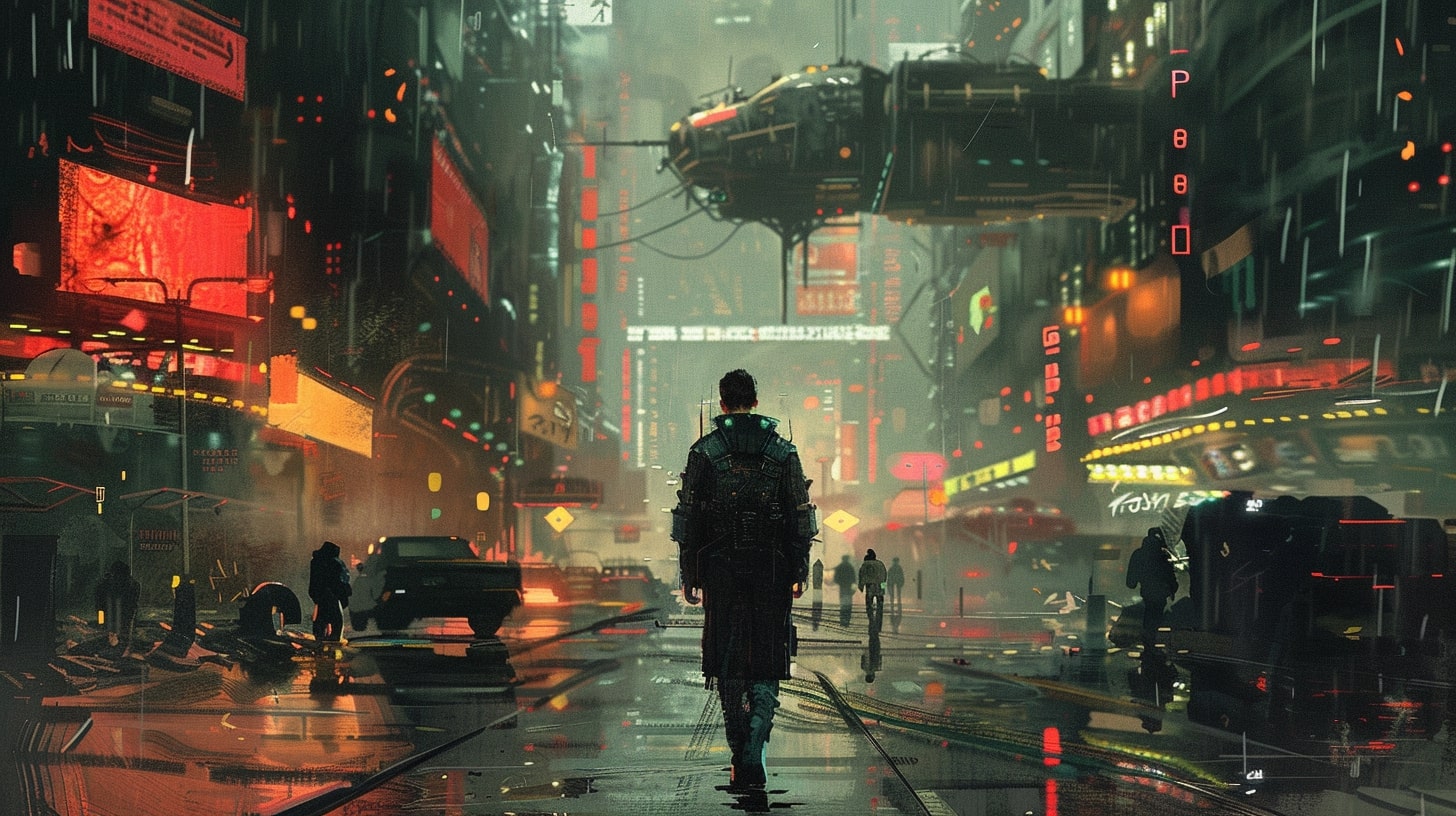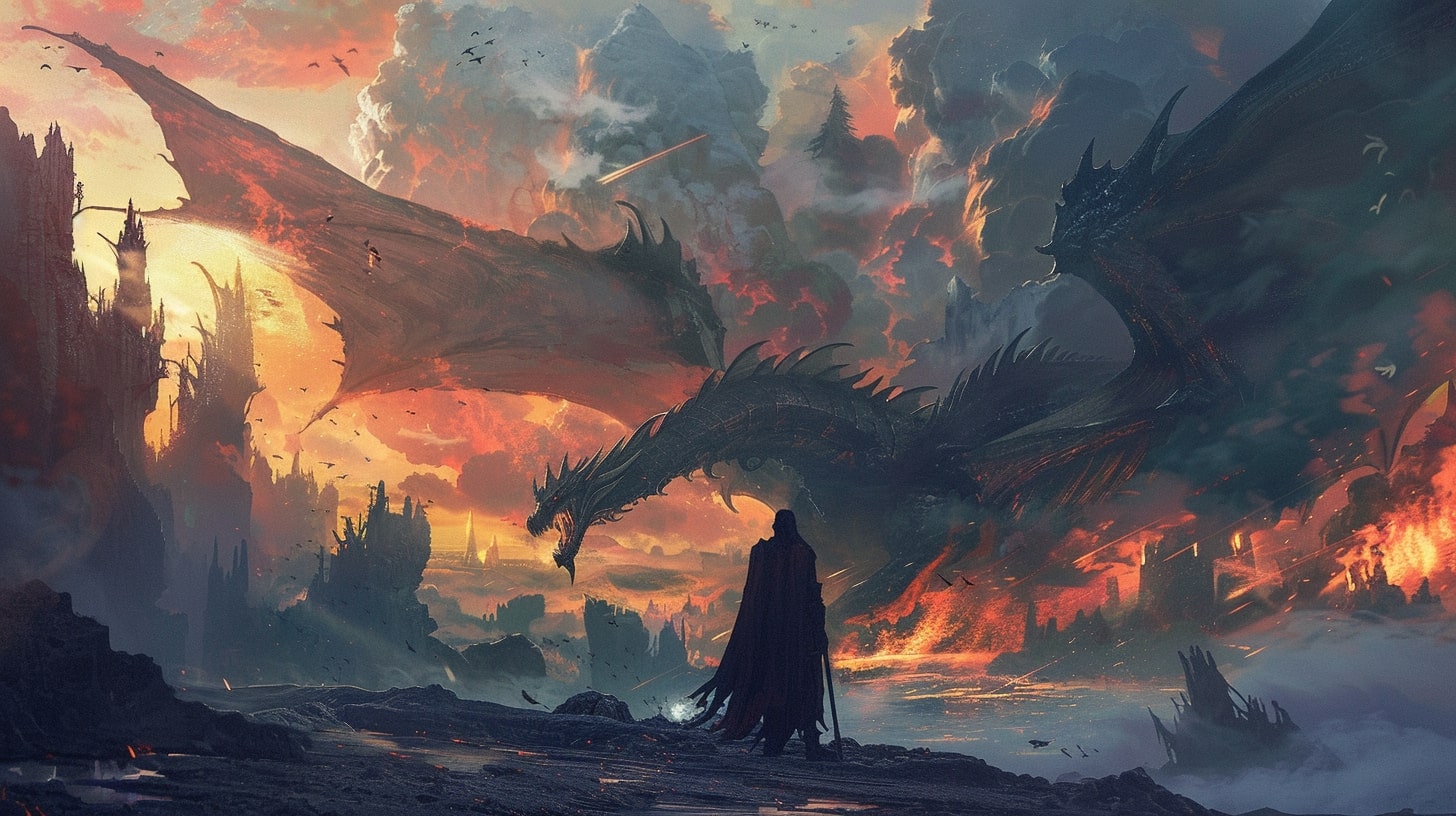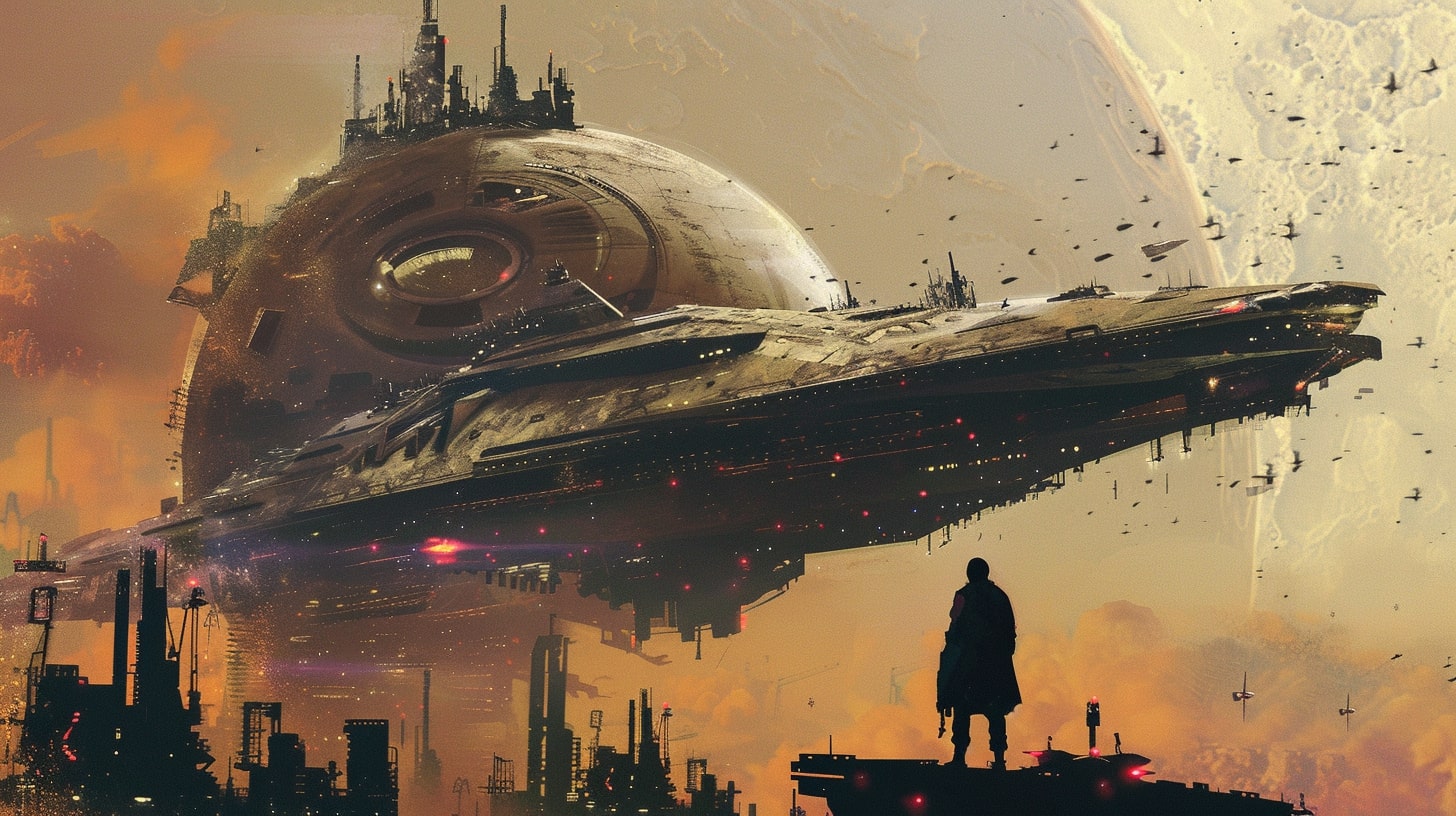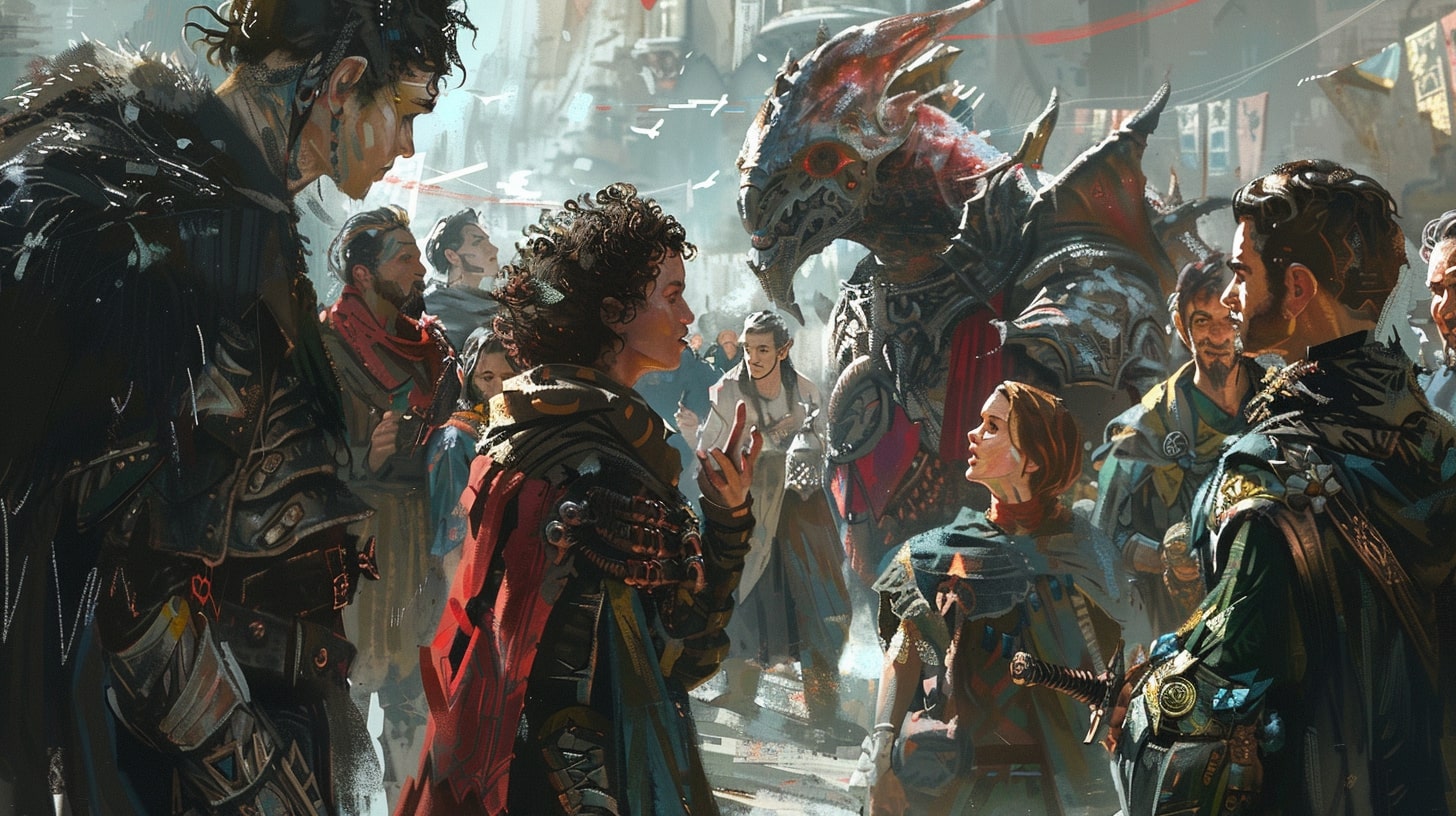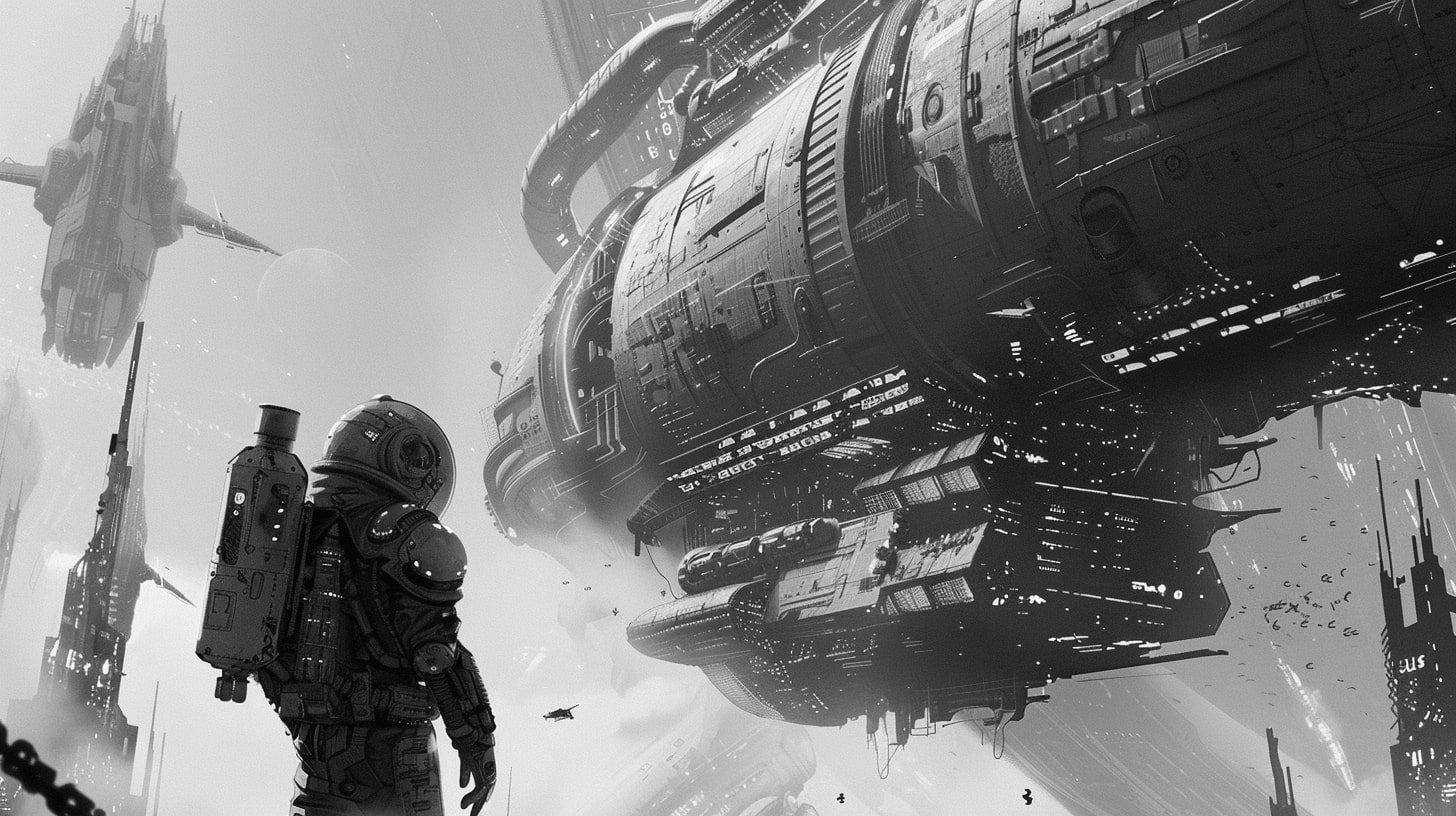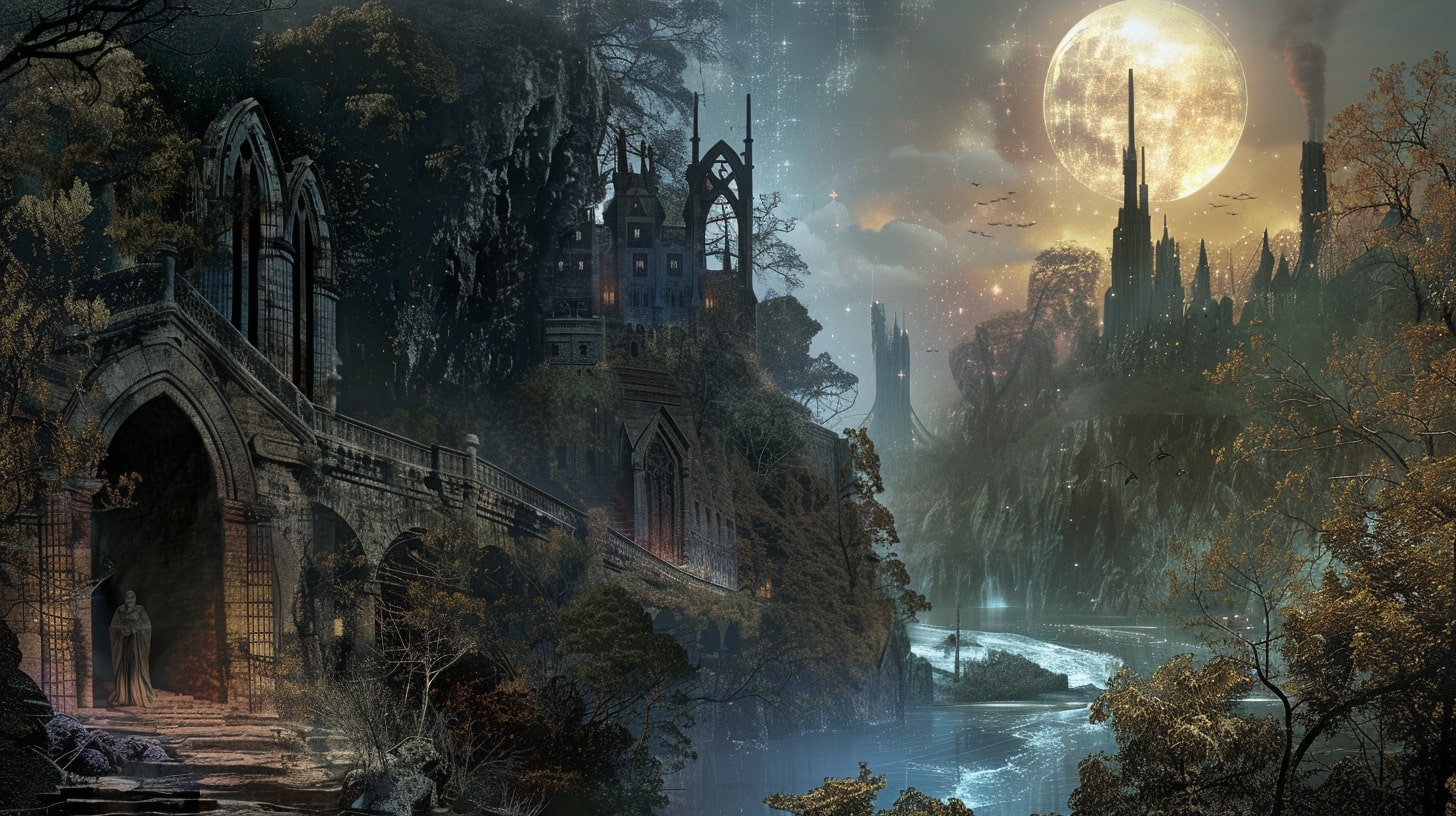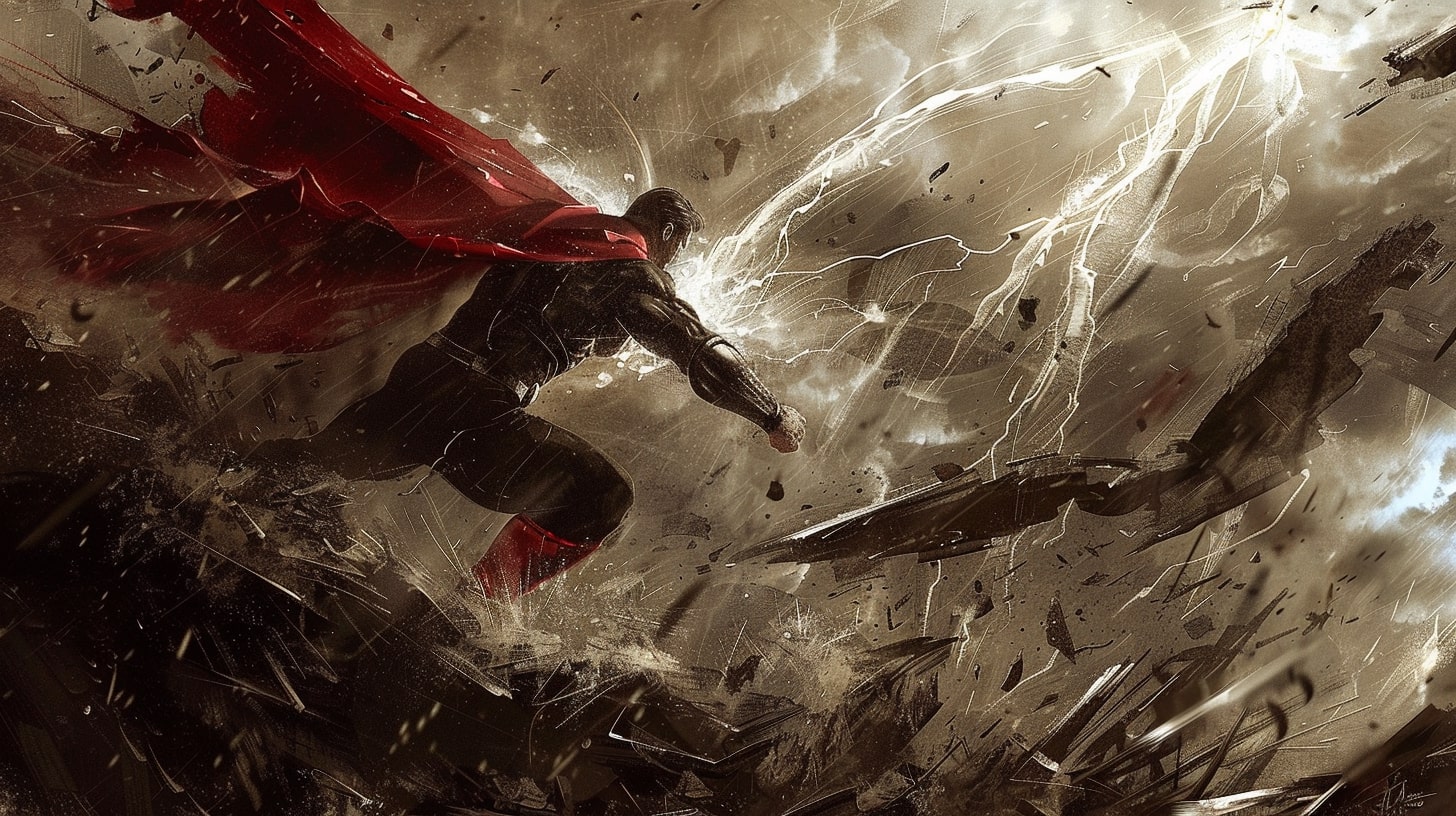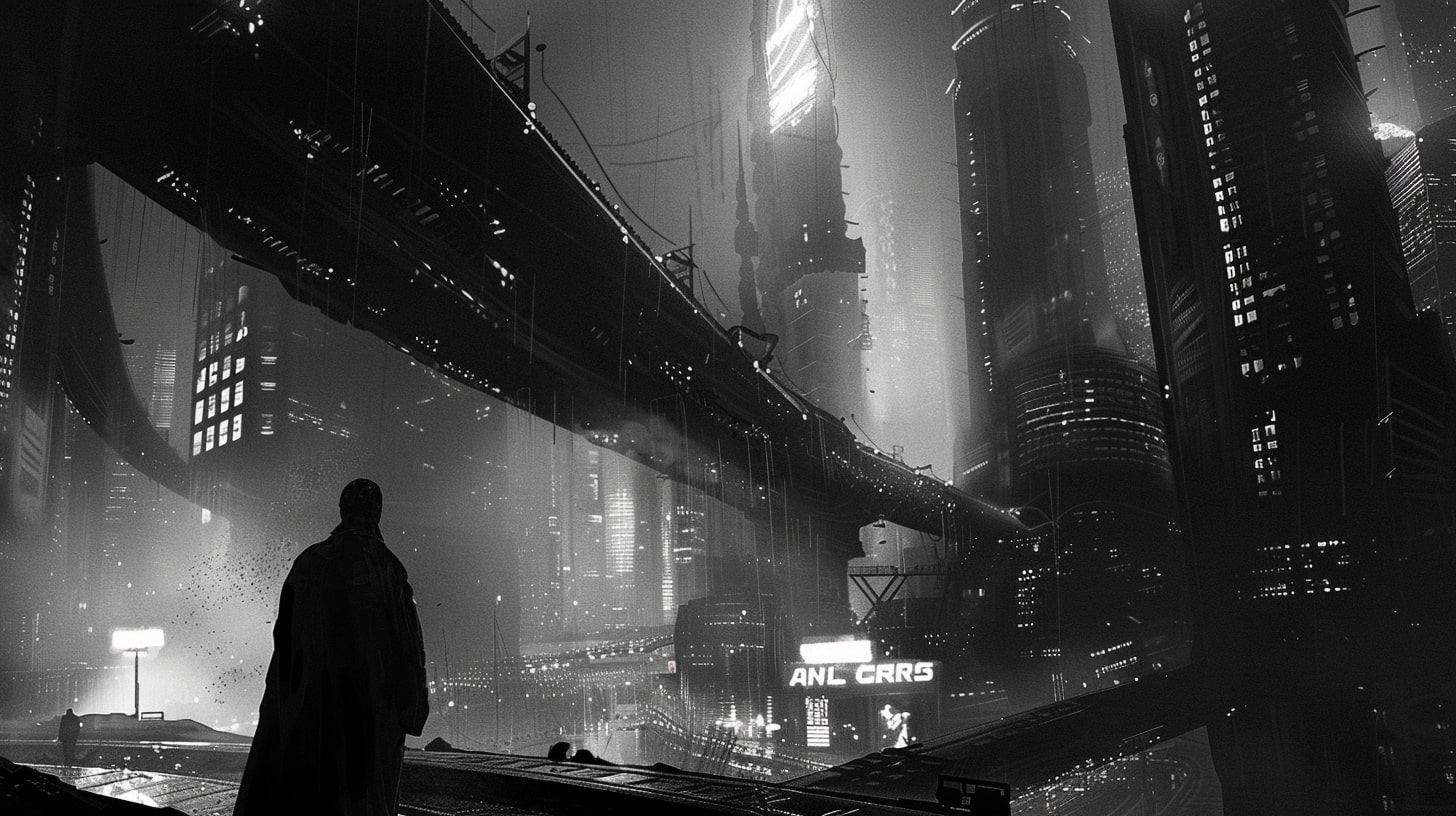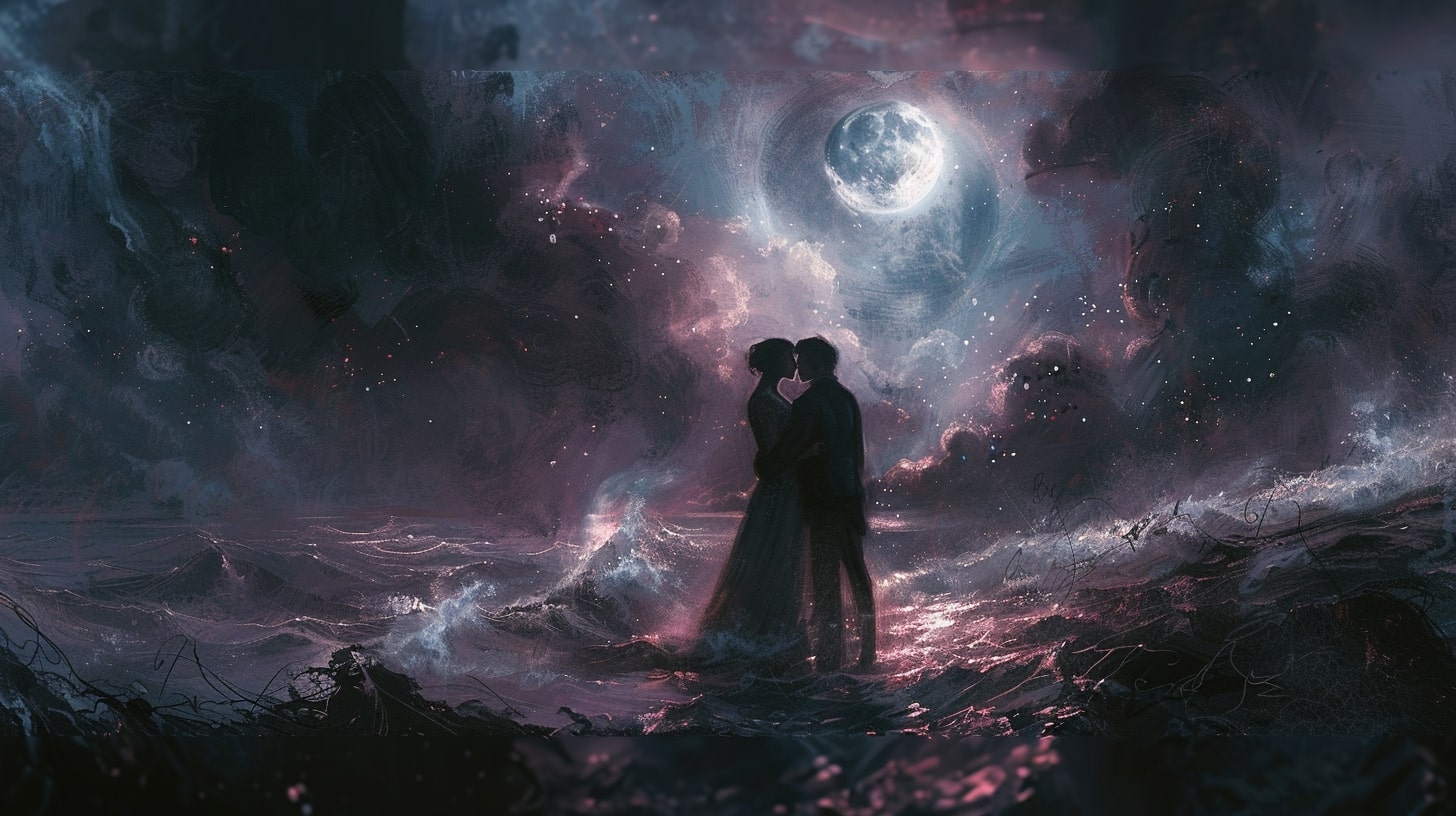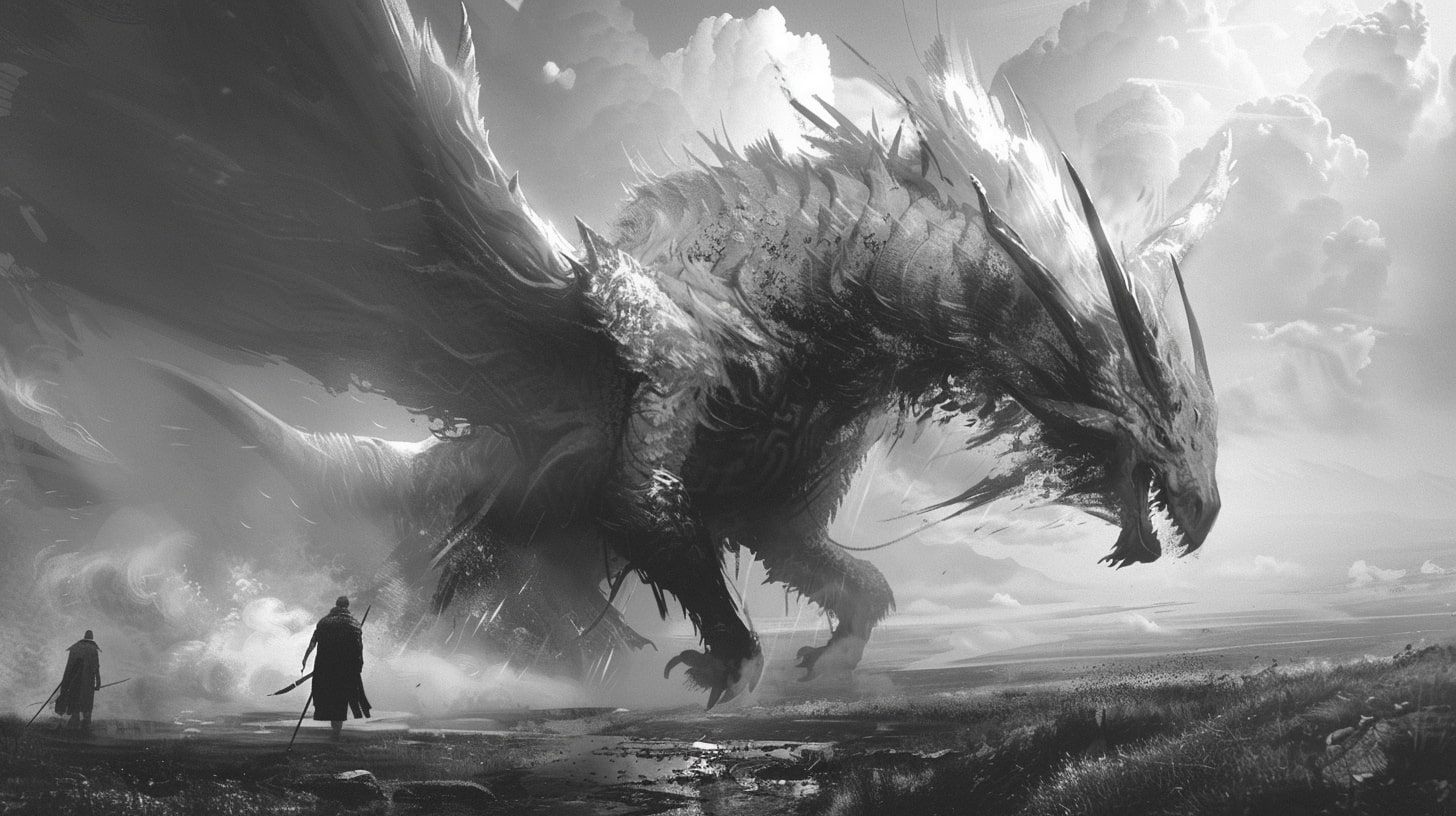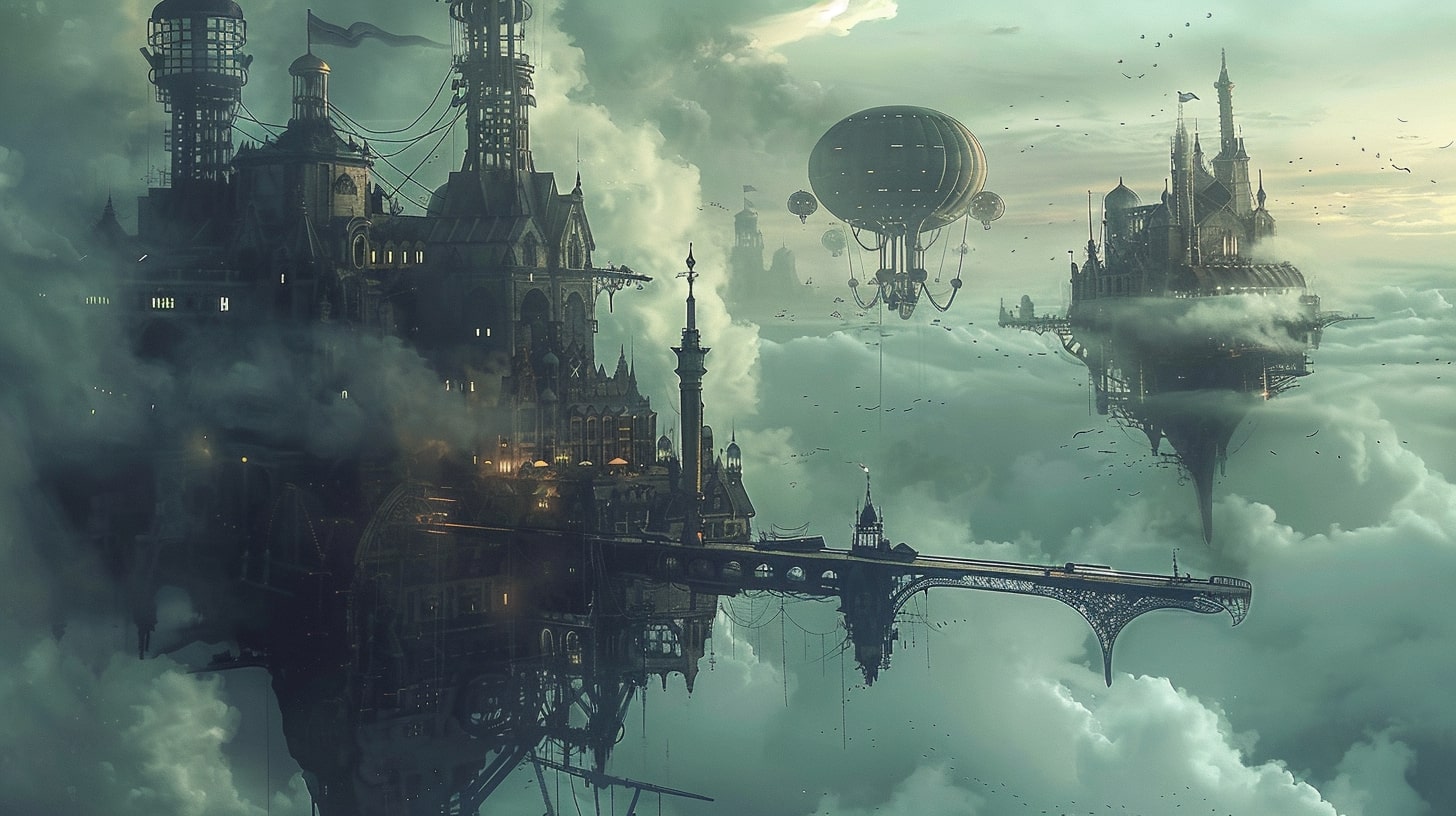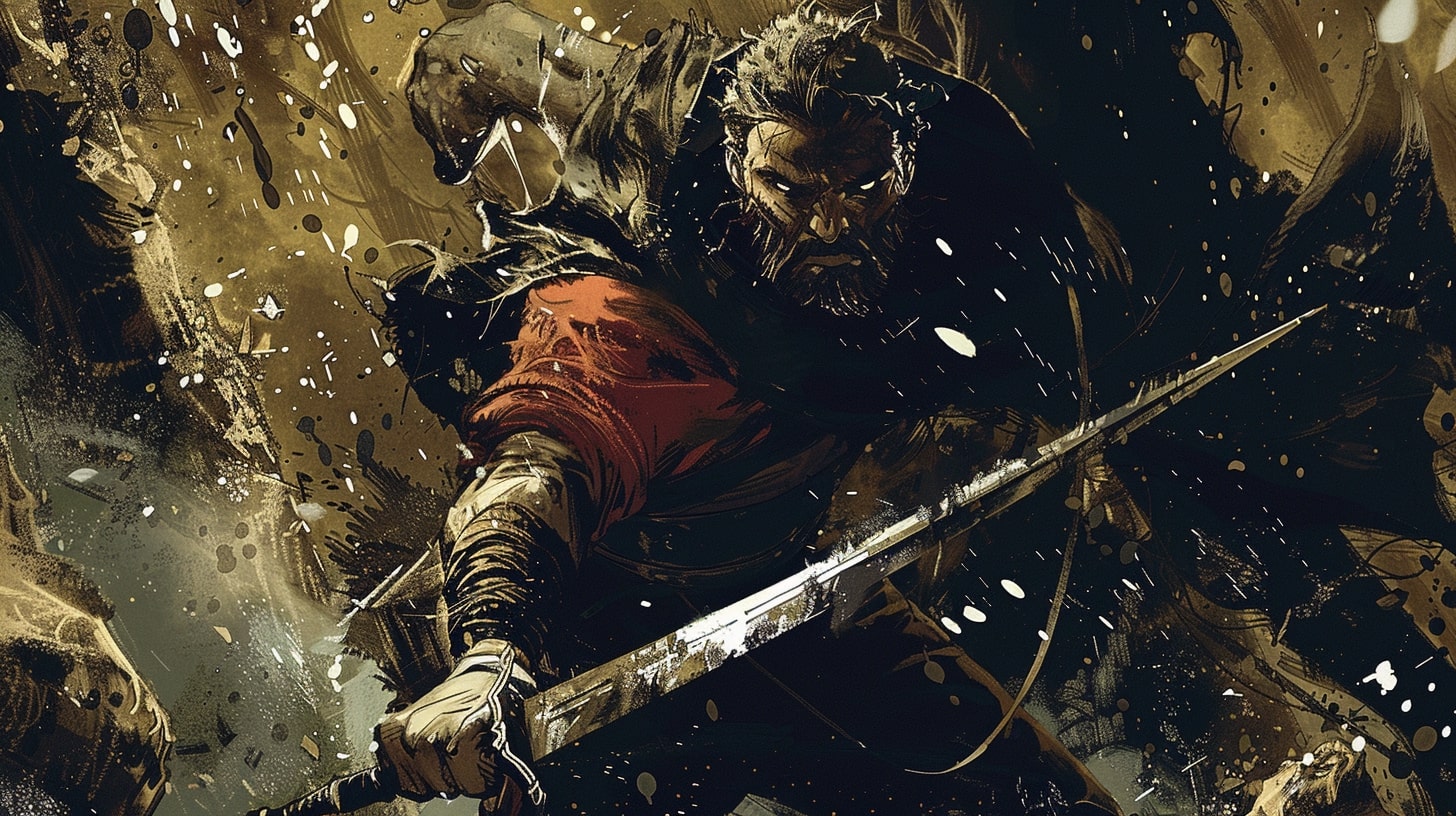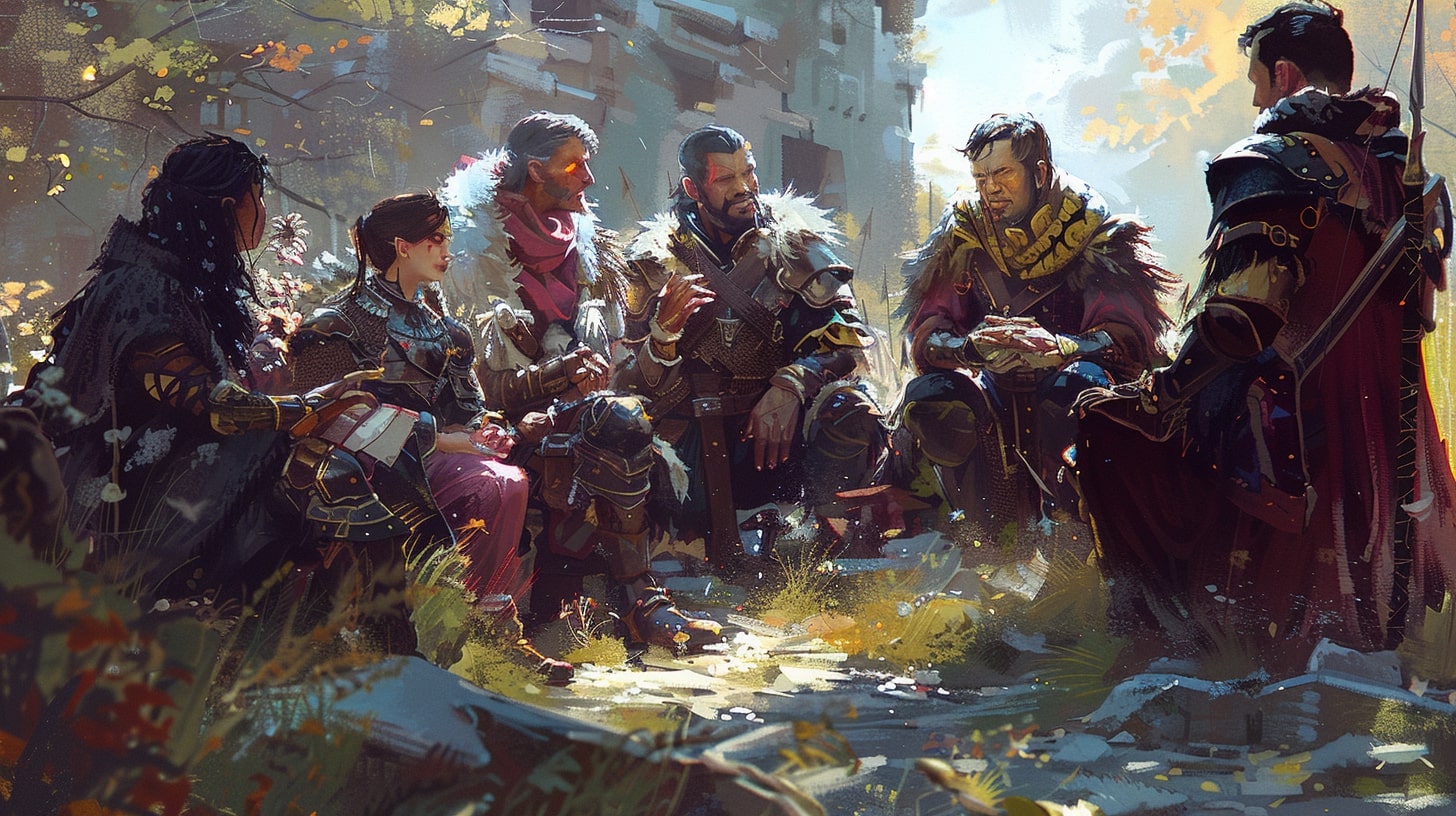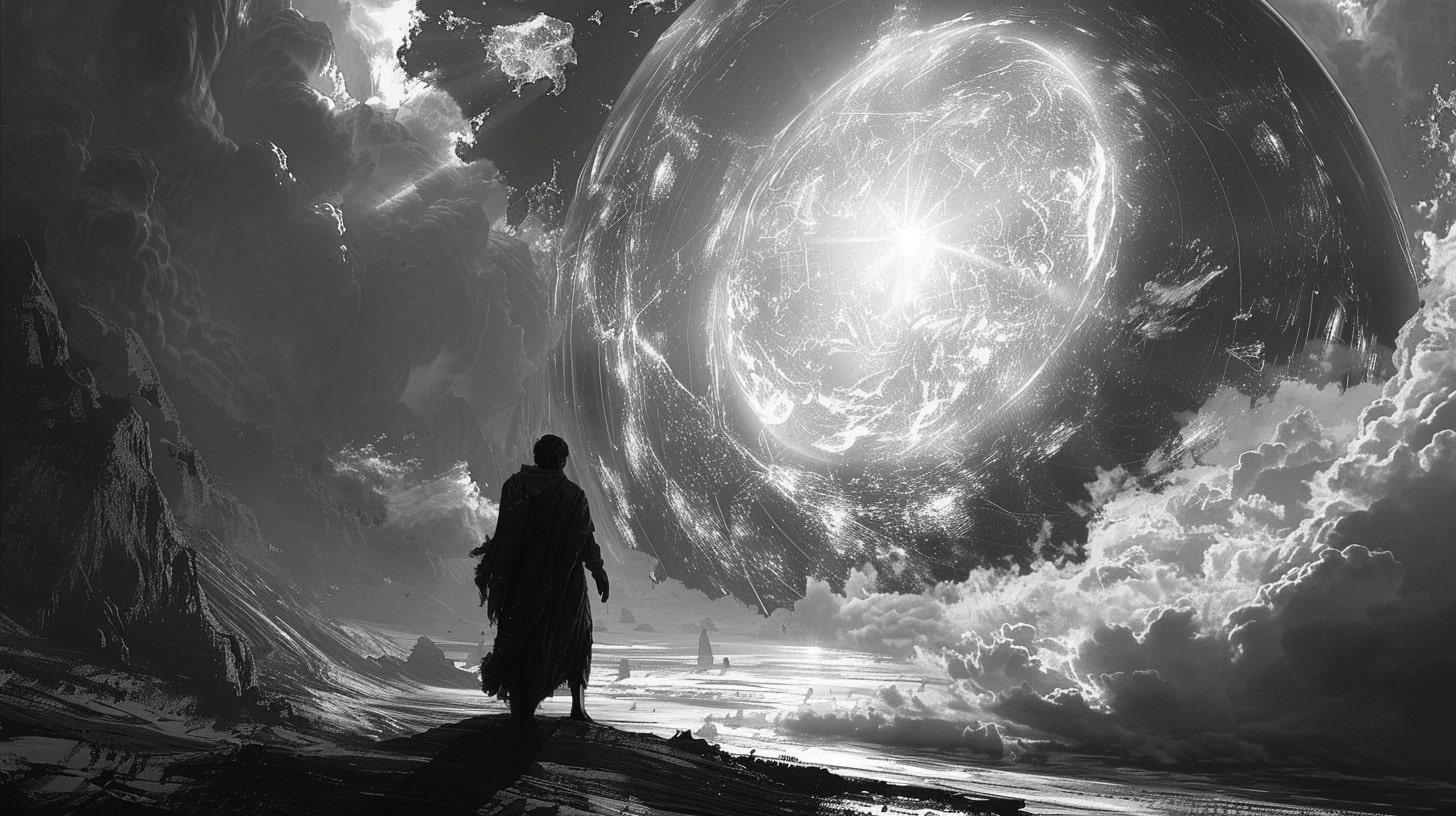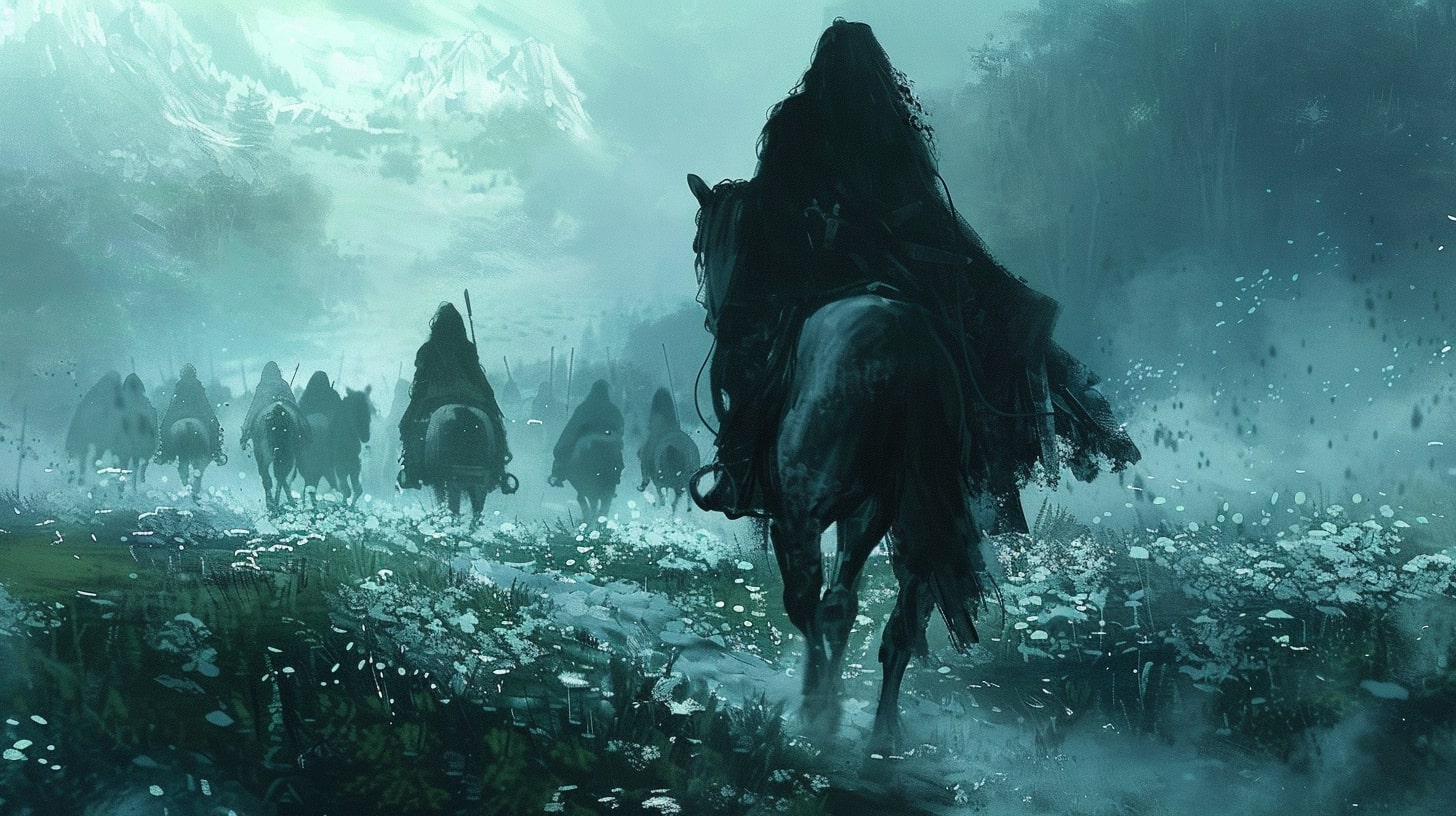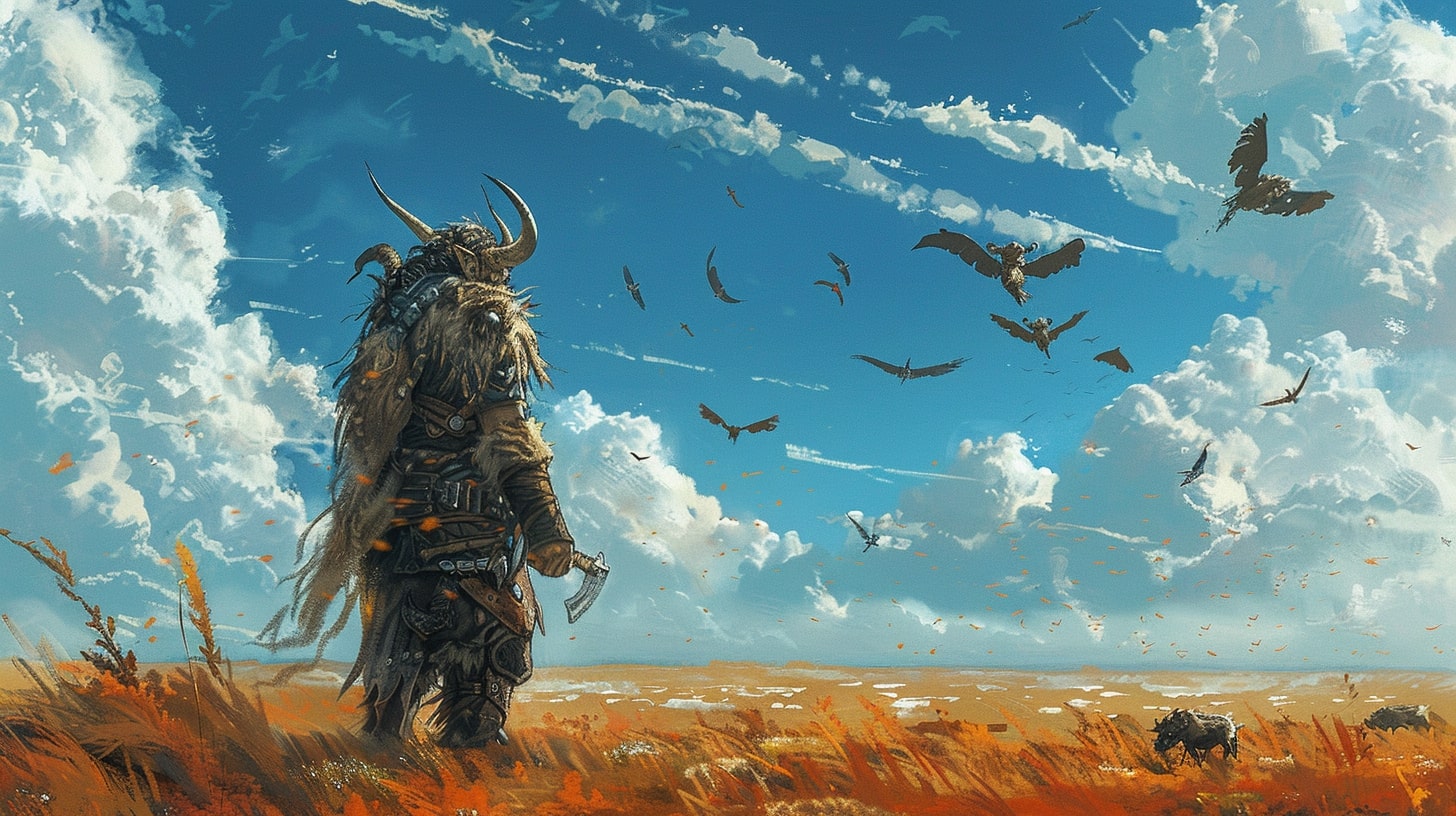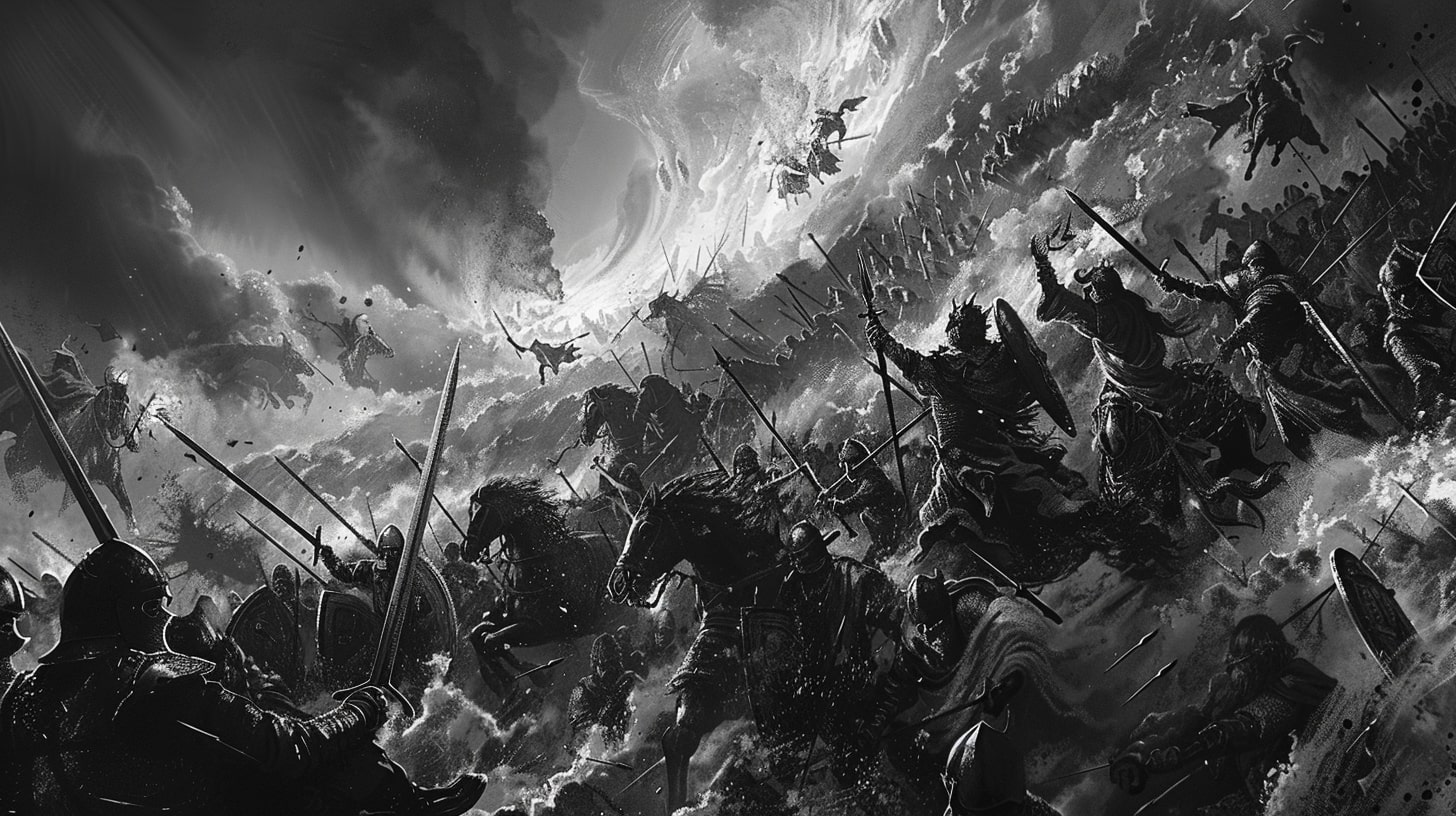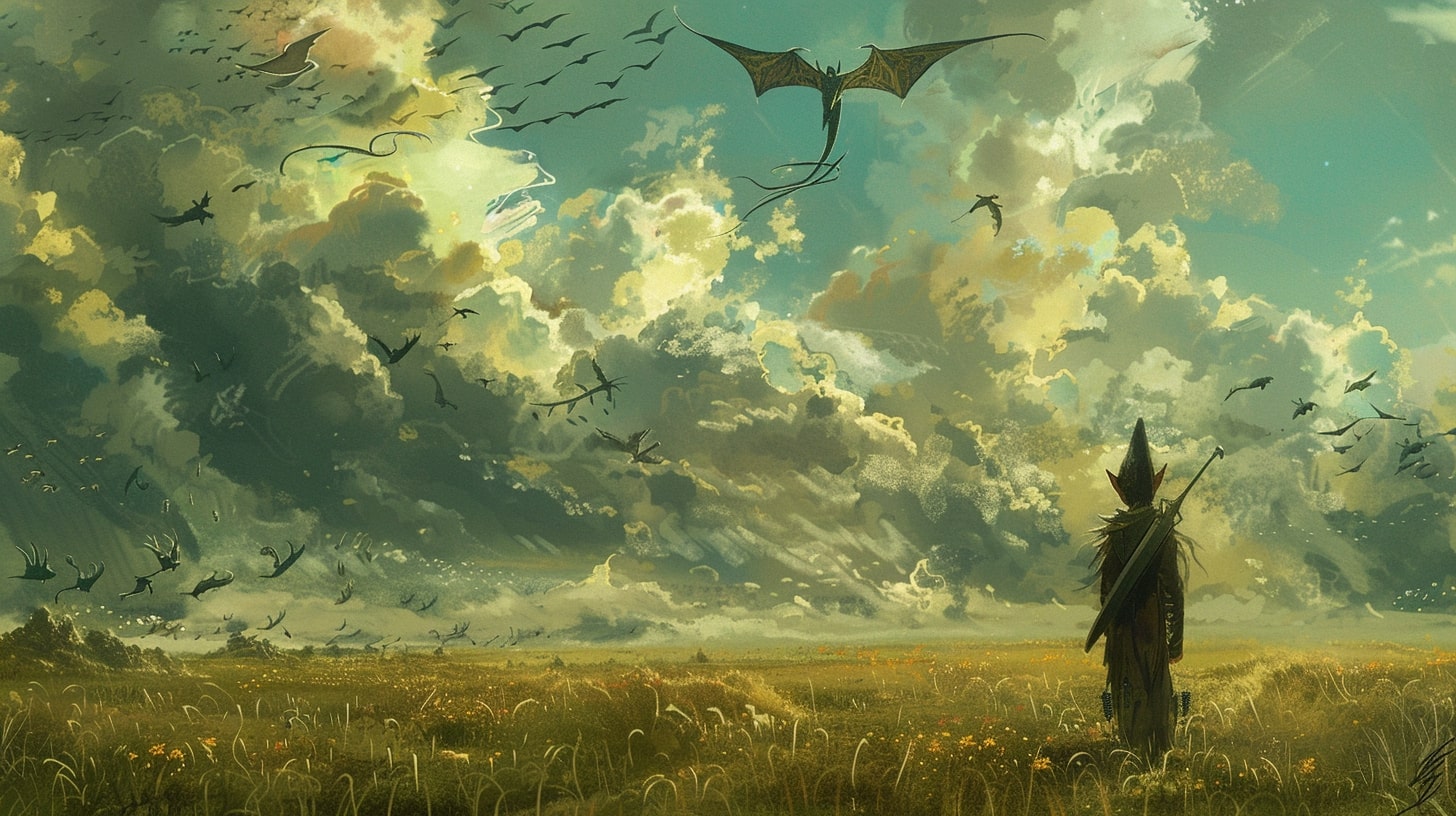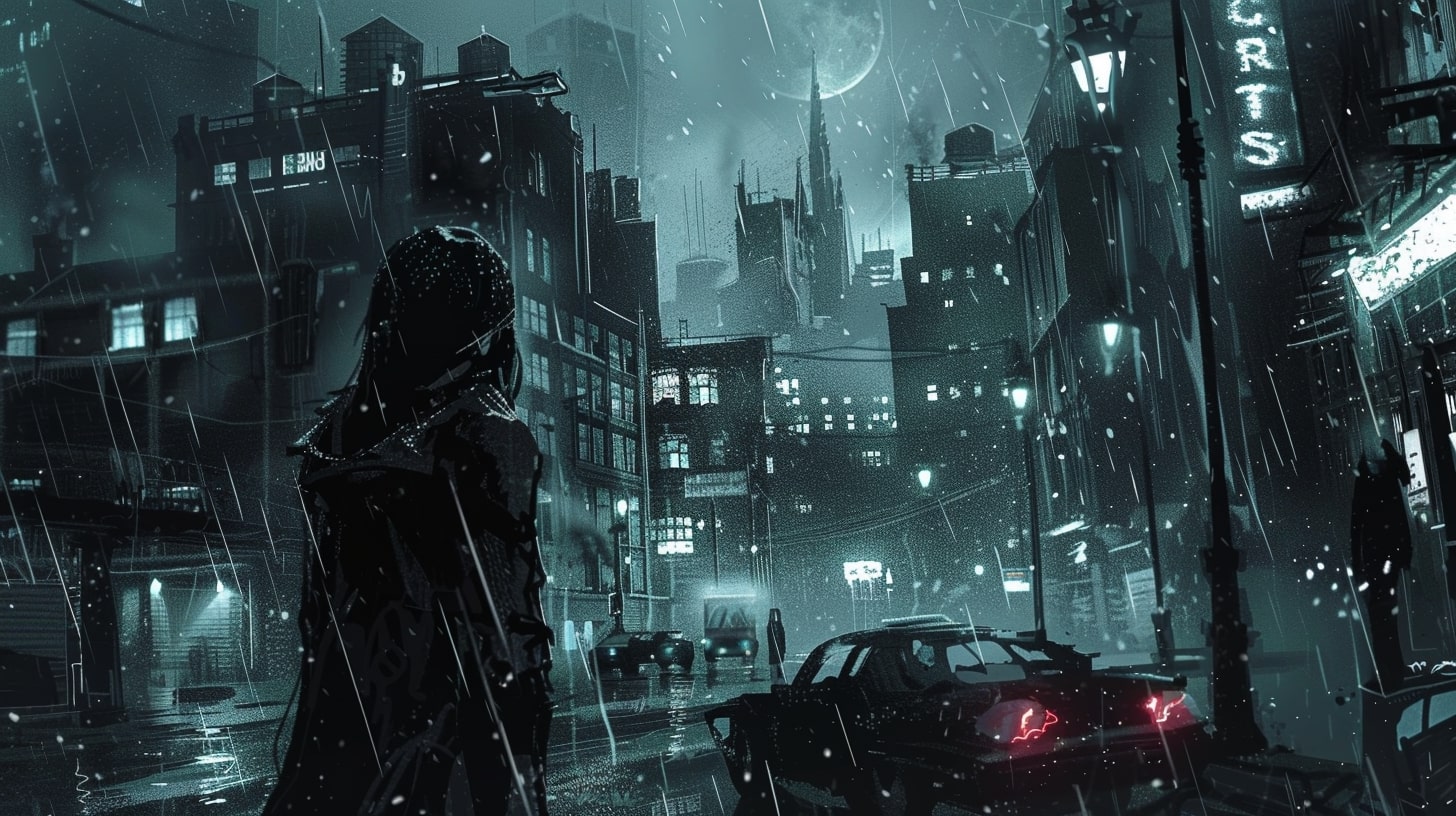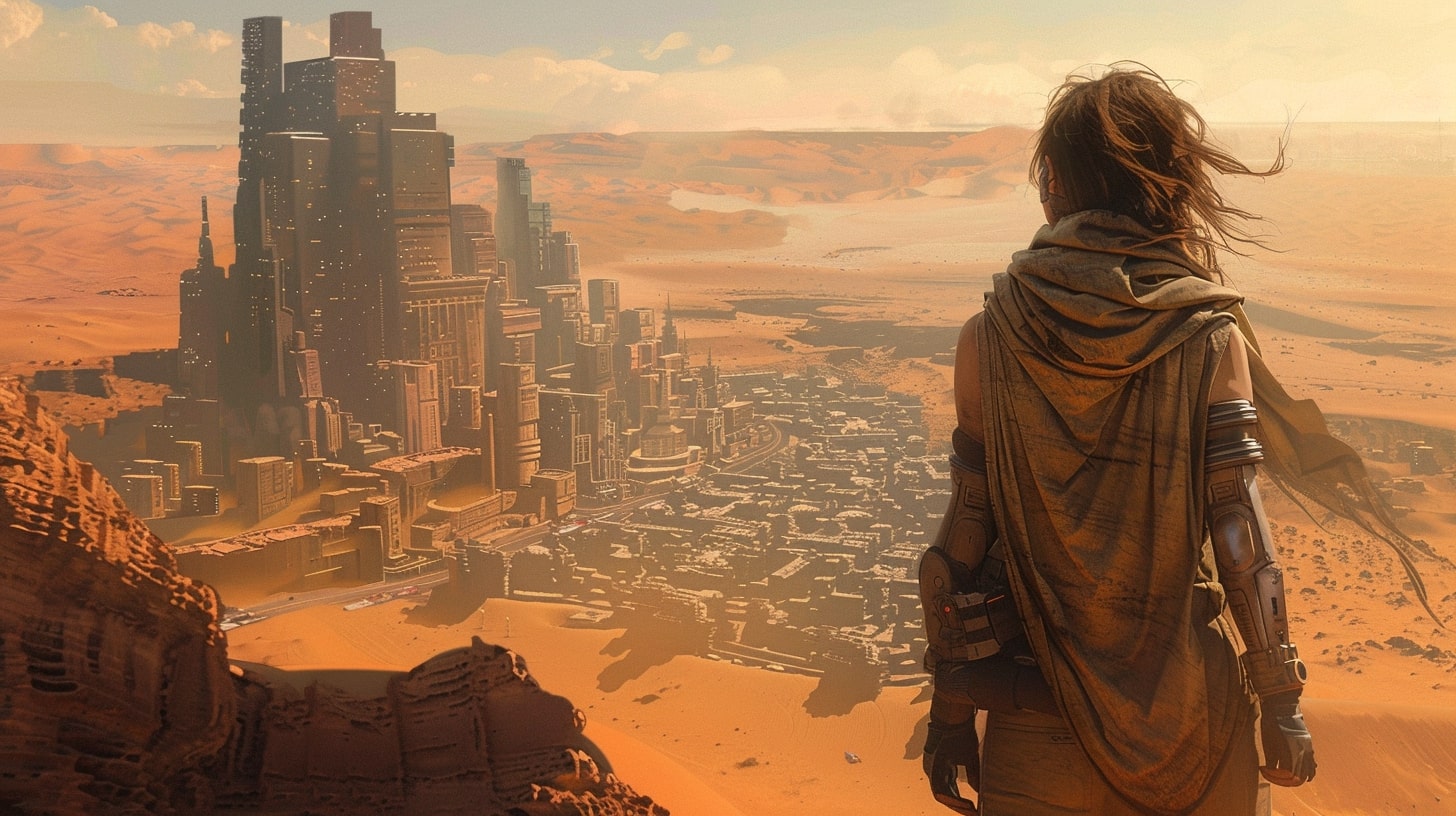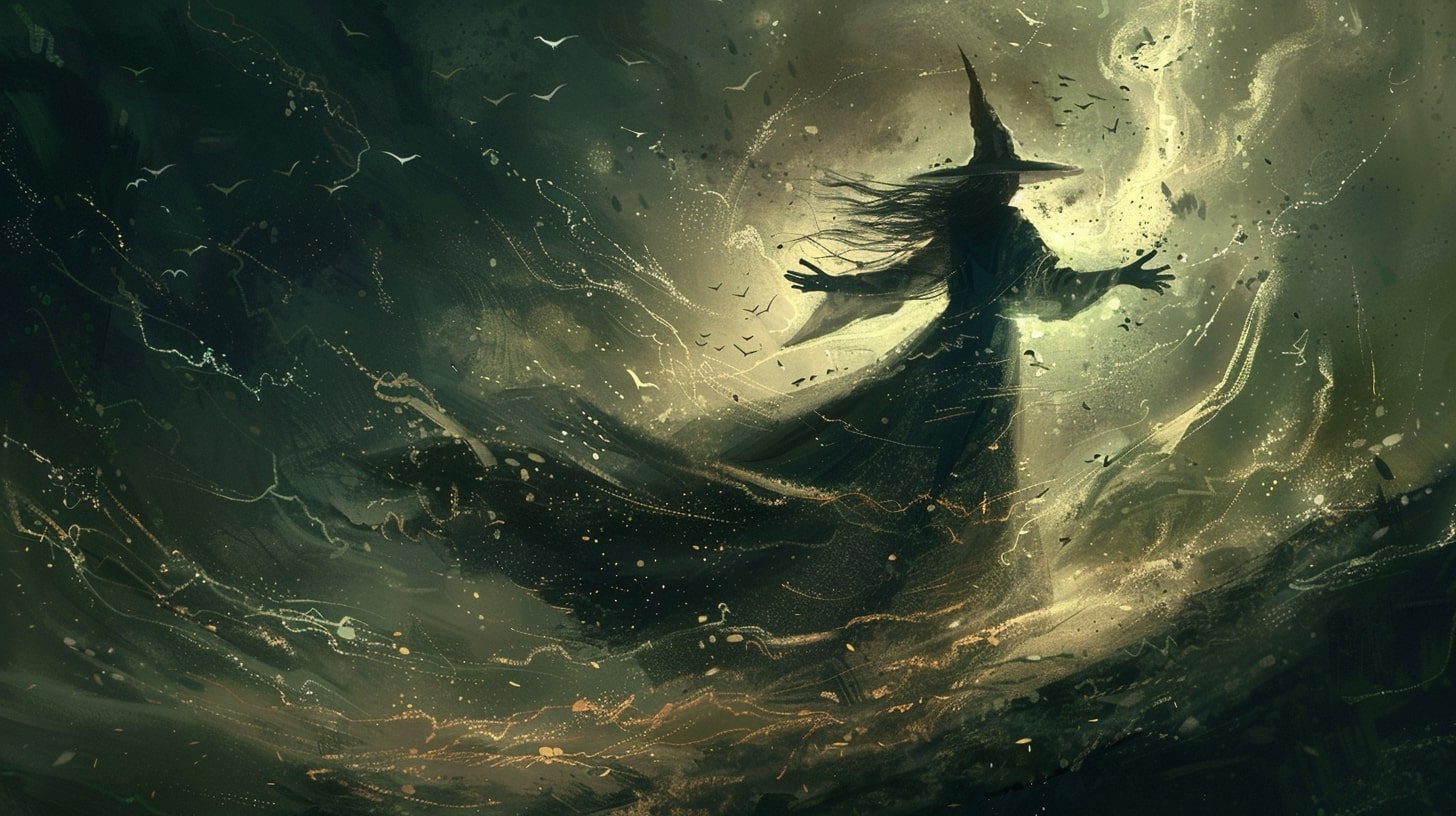Diving into Dystopian Fiction
Are you ready to embark on a writing journey into the captivating world of dystopian fiction? In this genre, you have the power to create thought-provoking stories set in bleak societies that challenge the status quo.
Let’s explore what makes dystopian fiction so fascinating and why you should consider writing in this genre. So if you’re ready to start writing dystopian fiction then buckle up because we’re about to get in it.
What is Dystopian Fiction?
Dystopian fiction presents a bleak and oppressive vision of the future or an alternate reality. In these worlds, society is often characterized by totalitarian governments, social injustice, and loss of personal freedoms. Dystopian stories serve as cautionary tales and explore the consequences of unchecked power, technology, and societal flaws.
As a writer, you have the opportunity to examine complex themes such as government control, surveillance, and resistance. You can delve into the human condition, questioning morality, and exploring the depths of human resilience in the face of adversity.
Why Write Dystopian Fiction?
Writing dystopian fiction allows you to delve into a world of limitless possibilities and explore the human experience in extraordinary circumstances. It’s one of the more interesting sub-genres of fantasy writing for me.
Here are a few reasons why you should consider writing in this captivating genre:
Social Commentary: Dystopian fiction provides a platform to comment on real-world issues through the lens of an imagined society. By reflecting on contemporary problems, you can engage readers in thought-provoking discussions about the world we live in today.
Exploration of Human Nature: Dystopian stories often challenge characters to confront their deepest fears, pushing them to their limits. Through this exploration, you can delve into the complexities of human nature, examining themes such as resilience, hope, and the pursuit of freedom.
World-Building: Crafting a dystopian world allows you to unleash your creativity and build intricate societies with their own rules, hierarchies, and histories. From towering cityscapes to desolate wastelands, you have the freedom to create immersive and vivid settings that captivate readers.
Emotional Impact: Dystopian fiction has the power to evoke strong emotions in readers. By immersing them in a world filled with struggle and adversity, you can create stories that resonate deeply, leaving a lasting impact and provoking introspection.
Writing dystopian fiction can be a thrilling and rewarding experience. By exploring the depths of human resilience and societal flaws, you can craft compelling narratives that captivate readers and inspire them to reflect on our own world.
In the next sections, we will guide you through the process of building a dystopian world, creating compelling characters, plotting your journey, and honing your writing skills to bring your dystopian vision to life. Let’s embark on this adventure together!
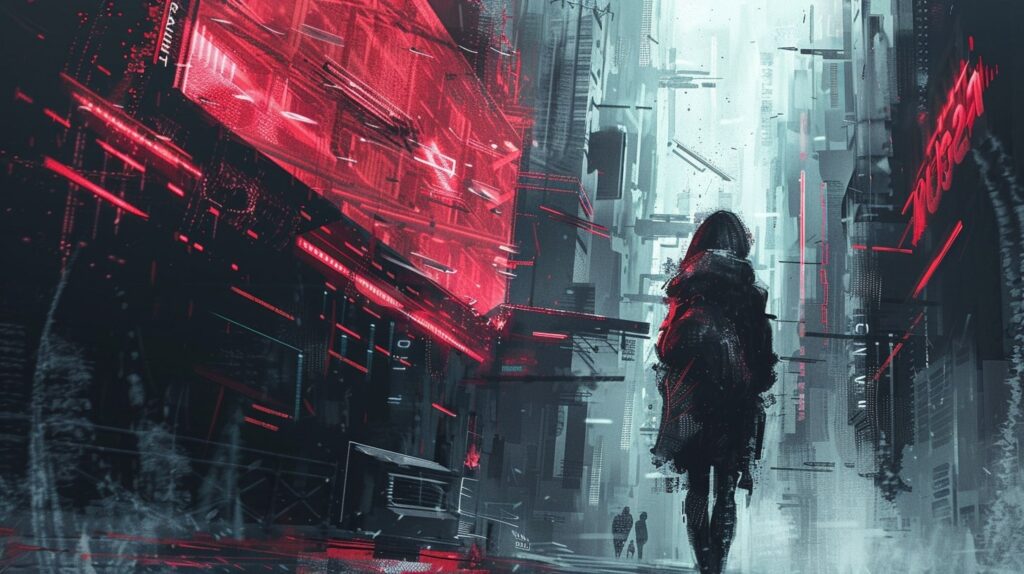
Writing Dystopian Fiction: Building a Dystopian World
In order to write a captivating dystopian fiction, building a well-crafted dystopian world is crucial. This involves developing the setting, creating an oppressive society, and establishing the protagonist’s role within this world.
Andrascu is dystopian because of the power struggles between the governments, corporations, and people trying to get their hands on artifacts.
Developing the Setting
The setting of your dystopian world plays a vital role in immersing readers into the story. Consider the physical landscape, the time period, and the societal structures that shape the world. Is it a post-apocalyptic wasteland, a futuristic city, or an alternate version of our own world? The setting should reflect the themes and atmosphere you want to convey. By providing descriptive details and creating a vivid backdrop, you can transport readers into this dystopian realm.
Creating an Oppressive Society
A hallmark of dystopian fiction is the presence of an oppressive society that controls and suppresses its citizens. Develop the governing system, whether it’s an authoritarian regime, a totalitarian government, or a dystopian corporation. Explore the rules, laws, and restrictions imposed upon the inhabitants.
Consider the ways in which the society maintains control, such as through surveillance, propaganda, or manipulation. The more thoughtfully you construct this oppressive society, the more compelling and believable your dystopian world will become.
Establishing the Protagonist’s Role
The protagonist is the main character who will navigate and challenge the dystopian world. Establish their role in this society and define their personal stake in the conflict. Are they an unwitting rebel, an accidental hero, or someone who actively resists the oppression?
What skills, traits, or circumstances make them uniquely suited to stand against the oppressive forces? By understanding the protagonist’s place within the dystopian world, you can effectively shape their journey and engage readers in their struggle.
By carefully attending to the development of the setting, the creation of an oppressive society, and the establishment of the protagonist’s role, you can build a dystopian world that captures readers’ imagination.
Remember to interweave these elements seamlessly throughout your narrative, allowing readers to experience the depth and complexity of your dystopian vision. For further inspiration and guidance on writing fiction, explore our articles on fantasy writing tips and creating a fantasy world.
Crafting Compelling Characters
To bring your dystopian fiction to life, it’s essential to craft compelling characters that resonate with your readers. These characters will navigate the oppressive society you’ve created and drive the narrative forward. In this section, we will explore the key elements of crafting characters for your dystopian world, including the protagonist, supporting characters, and villains.
The Protagonist: A Hero Against the Odds
The protagonist of your dystopian story is the central character who defies the oppressive society and fights for change. They are often an ordinary individual thrust into extraordinary circumstances. It’s important to develop a multi-dimensional protagonist that your readers can root for and relate to.
Consider their motivations, strengths, and vulnerabilities. What personal experiences or beliefs drive them to challenge the status quo? How do they respond to the challenges they face? By creating a resilient and relatable protagonist, you can engage your readers and keep them invested in the story.
Supporting Characters: Allies and Adversaries
Supporting characters play a crucial role in your dystopian narrative. They can either aid the protagonist in their quest or serve as obstacles, representing different perspectives within the society. These characters can be allies, mentors, or adversaries.
Allies provide support, guidance, and friendship to the protagonist. They can offer different skills or knowledge that complement the protagonist’s strengths. Adversaries, on the other hand, embody the face of oppression and can challenge the protagonist’s beliefs and actions. This dynamic between the protagonist and supporting characters adds depth and complexity to your story.
Villains: The Face of Oppression
In dystopian fiction, villains represent the oppressive forces that the protagonist is up against. These characters may be government officials, leaders of the oppressive regime, or enforcers of the system. They embody the power and control that the protagonist seeks to overcome.
When crafting your villains, consider their motivations and backstory. What drives them to maintain the oppressive society? Are they purely malicious, or do they have their own fears and insecurities? By developing multi-dimensional villains, you can create a more nuanced and compelling conflict in your story.
By carefully crafting your characters, you can infuse your dystopian fiction with depth and complexity. Remember to consider the motivations, strengths, and vulnerabilities of your protagonist, as well as the roles of supporting characters and the complexities of your villains. These intricately developed characters will drive the narrative and engage your readers in your dystopian world.
Plotting the Journey
As you embark on your dystopian writing journey, plotting the narrative is a crucial step in creating an engaging and gripping story. In this section, we will explore the key elements of plotting a dystopian journey, including the call to adventure, rising tension and conflict, and climax and resolution.
The Call to Adventure
Every dystopian story begins with a call to adventure that propels the protagonist into a world of chaos and oppression. This call can take many forms, such as an invitation to join a rebellion, a discovery of a hidden truth, or a personal loss that sparks a desire for change. The call to adventure serves as the catalyst for the protagonist’s journey, setting them on a path to challenge the oppressive society they live in.
Rising Tension and Conflict
Once the protagonist accepts the call to adventure, the story should be filled with rising tension and escalating conflict. This can be achieved through various obstacles and challenges that the protagonist encounters as they navigate the dystopian world. These obstacles can come in the form of physical threats, moral dilemmas, betrayal, or internal struggles. Each conflict should push the protagonist closer to their breaking point and test their resolve to bring about change.
To maintain the reader’s engagement, it’s essential to build tension steadily throughout the story, creating a sense of urgency and suspense. This can be achieved by introducing unexpected plot twists, raising the stakes, and deepening the complexity of the conflicts the protagonist faces. By balancing moments of triumph and setbacks, you can keep the reader invested in the protagonist’s journey.
Climax and Resolution
As the story reaches its climax, the tension and conflict should reach their peak. This is the moment when the protagonist confronts the source of oppression, battles against formidable forces, and makes a final stand for freedom and justice. The climax is the culmination of the protagonist’s growth and transformation, showcasing their strength and determination.
Following the climax, the resolution brings closure to the story. It reveals the consequences of the protagonist’s actions and the impact they have on the dystopian society. The resolution should tie up loose ends, providing a sense of catharsis and satisfying the reader’s desire for a resolution. However, it’s important to leave room for ambiguity and reflection, allowing readers to contemplate the larger themes and implications of the story.
By carefully plotting the journey of your dystopian story, you can create a narrative that captivates readers and explores the complexities of an oppressive society. Remember to consider the key themes of dystopian fiction as you shape your plot, and to employ techniques such as world-building and emotional engagement to enhance the reader’s experience. Keep honing your writing skills and exploring new ideas as you continue your writing journey.
Key Themes in Dystopian Fiction
When writing dystopian fiction, exploring key themes that resonate with readers is essential. These themes not only add depth to your story but also allow you to comment on societal issues. Here are three common themes found in dystopian fiction: Loss of Freedom and Control, Government Surveillance and Manipulation, and Resistance and Rebellion.
Loss of Freedom and Control
A prominent theme in dystopian fiction is the loss of individual freedom and control. In these fictional societies, oppressive regimes or totalitarian governments often strip citizens of their basic rights and liberties. Explore how your protagonist navigates a world where personal autonomy is restricted. Highlight the emotional and psychological impact of living in a society where choice and free will are greatly limited.
Government Surveillance and Manipulation
Government surveillance and manipulation are recurring themes in dystopian fiction. These stories often depict a world where governments employ advanced technology to monitor and control their citizens. Explore the consequences of living in a society where privacy is nonexistent and individuals are constantly under surveillance. Consider the ethical dilemmas faced by your characters as they navigate a world where their every move is scrutinized.
Resistance and Rebellion
Resistance and rebellion play a vital role in dystopian narratives. Protagonists often find themselves drawn into a fight against oppressive regimes, sparking hope for change. Explore the challenges and sacrifices your characters face as they defy the status quo. Highlight their courage, determination, and the bonds they form with other like-minded individuals. Incorporate elements of teamwork, strategy, and sacrifice as they work towards overthrowing the oppressive system.
By incorporating these themes into your dystopian fiction, you can create a thought-provoking narrative that resonates with readers. Remember to infuse your story with unique twists and perspectives to make it stand out. For more tips and techniques on writing within the realm of fantasy and science fiction, check out our articles on fantasy writing tips and science fiction writing techniques.
In the next section, we will explore writing techniques specific to dystopian fiction, allowing you to further enhance and refine your storytelling skills.
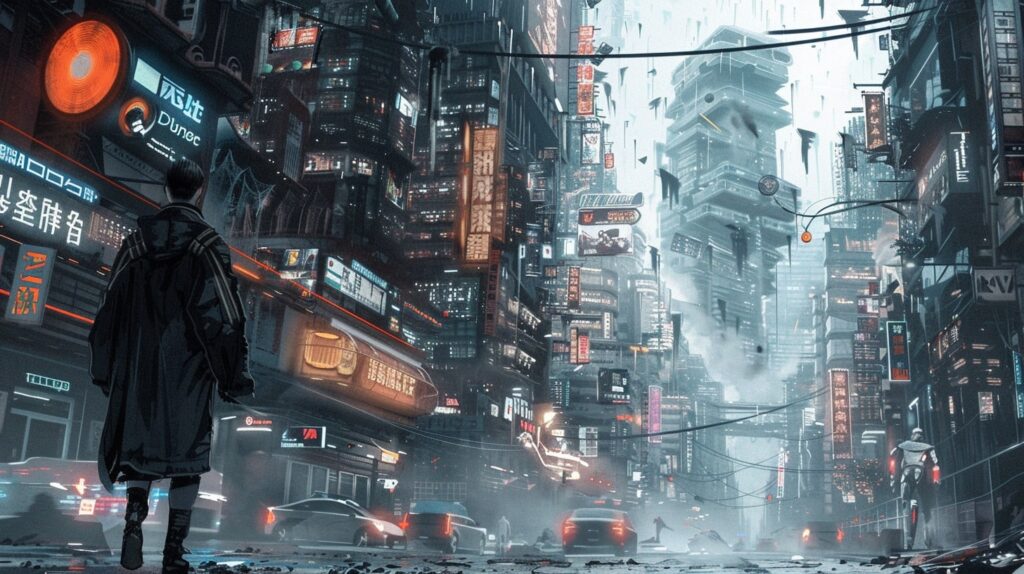
Writing Techniques for Dystopian Fiction
To create a compelling dystopian fiction story, it’s important to employ specific writing techniques that will captivate your readers and bring your dystopian world to life. Here are three key techniques to consider:
World-Building with Detail and Imagination
Dystopian fiction relies heavily on the creation of a unique and immersive world. To achieve this, focus on world-building by providing vivid descriptions and intricate details. Transport your readers into a future where society has drastically changed. Consider the political, social, and environmental aspects of your dystopian world. Describe the architecture, fashion, and technology that characterize this society. Use sensory language to engage your readers’ imagination and make the world feel tangible.
To enhance the world-building process, think about the history of your dystopian society. How did it come to be? What events led to its transformation? Develop a timeline and background that adds depth and richness to your story. By utilizing these techniques, you can create a world that feels authentic and draws the reader in.
Balancing Action and Reflection
A successful dystopian fiction story strikes a balance between action and reflection. While thrilling and fast-paced action scenes can keep readers engaged, it’s equally important to provide moments of introspection for your characters.
During action sequences, focus on dynamic pacing and descriptive language to intensify the impact of the events. Use short, punchy sentences to convey urgency and suspense. Engage the readers’ senses by describing the adrenaline, fear, or determination experienced by your characters.
In contrast, reflection allows readers to connect with the characters on a deeper level. Show the emotional toll of living in a dystopian society and the characters’ internal struggles. Use introspective moments to explore their motivations, fears, and hopes. This provides a contrast to the action-packed scenes and adds emotional depth to the story.
Engaging the Reader’s Emotions
To truly immerse your readers in your dystopian world, it’s essential to engage their emotions. Dystopian fiction often evokes feelings of fear, hope, despair, and resilience. Create characters that readers can empathize with and root for in their fight against oppression. Show the impact of the dystopian society on their lives, highlighting their struggles and triumphs.
To evoke emotions effectively, use descriptive and evocative language. Paint a vivid picture of the characters’ surroundings and their emotional states. Show the contrast between the harsh reality of the dystopian world and the characters’ dreams of a better future. By eliciting an emotional response, you can create a powerful connection between readers and your story.
By employing these writing techniques in your dystopian fiction, you can effectively transport readers to a world filled with oppression, resilience, and hope. Remember to focus on detailed world-building, strike a balance between action and reflection, and engage the readers’ emotions. With these tools in hand, you can create a captivating dystopian story that resonates with your audience.
Honing Your Dystopian Writing Skills
To become a skilled writer of dystopian fiction, there are several key steps you can take to enhance your craft. By reading and analyzing dystopian fiction, engaging in writing exercises and prompts, and seeking feedback and refining your work, you can develop your skills and create compelling dystopian narratives that captivate readers.
Reading and Analyzing Dystopian Fiction
Immerse yourself in the world of dystopian fiction by reading widely within the genre. Explore notable dystopian novels and short stories, paying attention to the themes, plot structures, and character development employed by successful authors. This exposure will provide you with a deeper understanding of the genre’s conventions and help you identify techniques you can incorporate into your own writing. For recommendations on dystopian fiction to add to your reading list, check out our article on how to write fantasy novels.
Writing Exercises and Prompts
Sharpen your dystopian writing skills through targeted exercises and prompts. Practice constructing dystopian settings, developing complex characters, and crafting tension-filled scenes. Experiment with different narrative perspectives, writing styles, and world-building techniques. Engaging in regular writing exercises can help you refine your storytelling abilities and strengthen your command of the dystopian genre. For more guidance on honing your writing skills, explore our article on fantasy writing tips.
Seeking Feedback and Refining Your Work
Obtaining feedback from trusted sources is invaluable in improving your writing. Share your dystopian fiction with fellow writers, join writing groups, or seek guidance from beta readers. Constructive criticism can provide fresh perspectives and highlight areas for improvement. Take the feedback into consideration and revise your work accordingly. Remember, the revision process is an essential part of refining your dystopian story and ensuring its coherence and impact. For additional tips on refining your writing, visit our article on creating a fantasy world.
By actively engaging in these practices, you can continue to develop your dystopian writing skills. Remember to stay persistent, embrace the creative process, and never hesitate to seek guidance and support. With dedication and practice, you can empower your writing journey and conquer the world of dystopian fiction.
